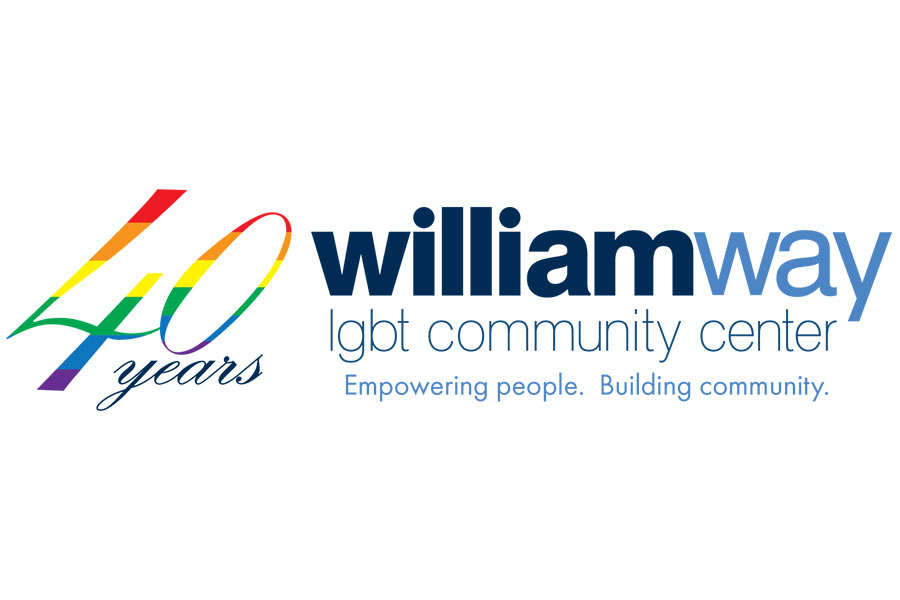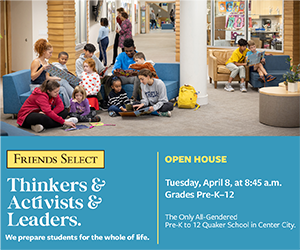This year the William Way Community Center — one of the primary forces behind the 50th-anniversary celebration of the Annual Reminder Days — is celebrating its own 40th anniversary.
From its humble beginnings in a coffee shop on Third Street to the stately historic Gayborhood building where it currently resides, the center has come a long way in its four decades — yet it has never stopped pursuing its mission of bettering the lives of the community it serves.
Getting off the ground
According to Bob Skiba, archive curator at William Way, the organization began as a very small, grassroots initiative in the wake of Philadelphia’s first Pride parade in 1972.
“After the first Pride parade, people started talking about a gay community center,” Skiba said. “The bars were looked down upon because many of them were mob-owned and often had high drink prices. People wanted an alternative space to socialize.”
A small group began to meet at a coffee shop at 16 N. Third St. Then in 1975, the group incorporated as the Gay Community Center of Philadelphia. In 1976, the fledgling organization moved into its first building on Kater Street.
“For the first year or so, in the ’70s, when gay people were really anti-establishment, there was no board of directors or corporate structure like there is today,” Skiba said. “That was a deliberate choice. Instead, everything was run by committees.”
From the beginning, the center offered services much like it still does today, including classes, a library, events, fundraising and rental space.
“There was a real sense of commitment to the community from day one,” Skiba said.
The center was also completely volunteer-run until it moved to its current location, at 1315 Spruce St., in the late 1990s.
“The people who ran this place were also responsible for everything, to keeping the bathrooms clean,” said Skiba. “Everyone spent countless hours fundraising to pay for things.”
Eventually, the organization transitioned from volunteer-run into a corporate structure, enabling it to apply for grants and funding in order to meet its goals of expanding services.
In 2010, Chris Bartlett became executive director and has done much over the past five years to prepare the center for the next 40, Skiba said.
“Chris has done a lot to make the center more financially stable, as well as reaching out to underserved segments of the LGBT population, especially the ‘T,’ among other things,” he said.
Expanding, evolving
Bartlett said he has focused on expanding the visibility of the center throughout the city as a whole, beyond the Gayborhood.
“We have focused a lot on arts and culture programming in particular,” the director said. “We’ve increased access to the archives, grown senior and youth programs. Strengthening the intergenerational bond between the youth and seniors in the LGBT community has become a part of the center’s vision going forward.”
Bartlett acknowledged the progress that has been made over the past few years by the center diversifying its funding sources.
“We’ve been successful in making the case to foundations, corporations and individual sponsors that the center is a crucial part of Philly culture,” he said.
One of his key goals is solidifying the future of the historic Spruce Street building the center now owns.
“I want to look strategically at how we can care for and utilize the building,” Bartlett said. “It’s an old building. To maintain it and keep it looking the way it should requires a lot of investment. We’re also bursting at the seams capacity-wise. We need to think about expansion, maybe at this site or another location.”
Bartlett said another goal is to continue to build on the intergenerational vision of the center.
“How do we bring youth and seniors together?” he posed.
Part of the answer lies in the new program director Bartlett said they plan to bring on board soon.
“This position is going to go a long way in continuing our efforts to build community between the two generations,” he said. “People have come to expect more from us because we are able to do more.”

